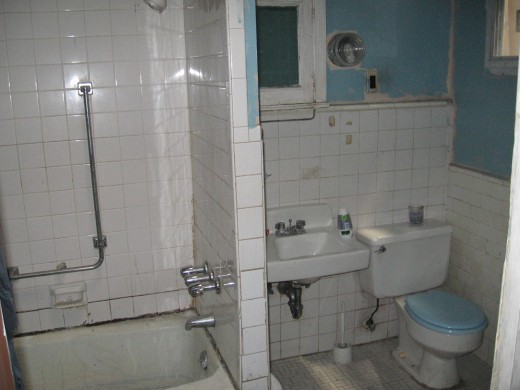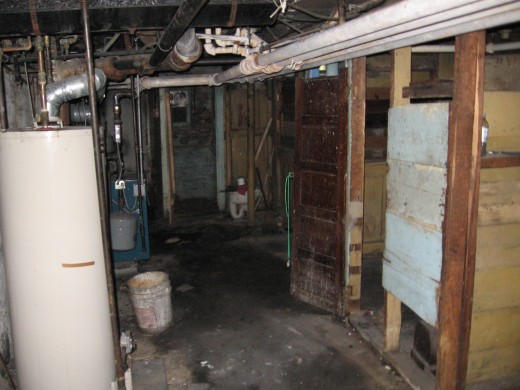How to Renovate a Townhouse in Brooklyn Volume 1 Edition 4
The Nitty Gritty

Three weeks until closing.
My plans with Hubbie to buy a 112-year old house in Brooklyn are slowly coming together. We have provided the bank with pay stubs, W2s, tax returns and statements of assets and accounts. The lender has vetted our employers, twice, checked our GC's licenses, references and insurance, and asked for substantiation of almost every single bank deposit for the preceding 5 months. There was the engineering inspection, the home inspection, the HUD inspection and the apprasial. We are least half way there.
Meanwhile, we need an architect or an engineer. This is not a cost we had planned for.
“You’re going to need plans and permits for this job,” our GC, Sal, said right off the bat, “especially since you're doing this with the bank.”



To get building permits in NYC, you have to file plans with the Department of Buildings - the DOB. Either an architect or a registered engineer can draw your plans. In either case a third party, known as the expediter, maneuvers your paperwork successfully through the fascinating maze that is the Department of Buildings. Essentially, the expediter knows everything and goes down to the DOB to get it all done.
The house that Hubbie and I hope to buy is located in a historical district. This means that the New York City Department of Landmarks Preservation must first approve our plans or the DOB won’t even look at them. Add that to our list.
As for the scope of work.


Even taking on only the minimal amount of work required to pass an FHA inspection, we still have a big project on our hands. This in part because much of the work that goes into a renovation is actually not seen in the final product-the plumbing, the electric, the demo.
To give you an idea, the list going into the renovation looks something like this: Remove and Replace Roof, Upgrade Electrical wiring throughout, Install all new electrical fixtures and sockets, Demolish 2 Bathrooms and 1 Kitchen, Install 2 Bathrooms and 1 Kitchen including cabinets, counters, appliances and fixtures; Repair and Replace Wood Floors throughout; Resurface and prime all walls and ceilings; Replace all 4 Exterior Doors; Replace all 4 skylights; Repave front entrance walkway to eliminate tripping hazard; Remove wall at the top of the stairs and in front of the nursery; Install banister at the top of the stairs; Remove lead paint, if any; Remove all asbestos, if any; Clear open heating permits and test heating system (hope it works).
Still, Hubbie and I were able to keep the scope of work reasonably contained. In fact, the project estimate from Sal, including materials, labor and insurance, was 5% less than the number Hubbie and I had arrived at on our own at based on the initial inspection.




In addition to using classic but affordable materials like carrara marble counters and ceramic subway tiles, one place where Hubbie and I had hoped to save serious money was on the architect's fees. In NYC licensed, architects are quoting somewhere around $30 per square foot for projects like ours, which could mean a line item in our budget of $60,000 for the plans for the old house in Brooklyn. This is seemed like an expense we couldn’t afford not to forgo.
We had done our research and understood that since we would be maintaining the official use of the house (it would remain a single-family with 1 kitchen and 2 full baths), our work would not require us to obtain a new Certificate of Occupancy from the DOB. We hoped this meant forgoing an architect and, at the very least, having our GC professionally certify with the Department of Buildings that all of his work will be to code and with no changes to the home’s use.
And Hubby and I would have been right. Except we forgot about the bank.



Sal hadn’t been our first choice for GC, but Hubbie had liked him right away. Sal wore jeans with Nikes and dark sunglasses, and took notes on cellular his phone. He has a New York accent with a touch of Staten Island in it, and was not at all unfriendly. It was Sal who understood all of our specific needs with regards to keeping our scope of work to an absolute minimum. He had also worked on FHA 203(k) loan renovation projects before, and understood that his company would not be making a drop of money until the project was at least 20% complete.
Hiring Sal was a no brainer. He was even quick with the paperwork.




Volume 1, Edition 5
- How To Renovate A Townhouse In Brooklyn Volume 1 Edition 5
Nowadays, newscasts, blogs and web stories about prospective homebuyers encountering last minute resistance from the bank where they have applied for a home loan are downright common. Prior to going into contract on a 112-year old townhouse in...
So it was Sal who brought us back to reality and insisted that the only way he would work with us would be if we got full permits for the job. This would mean finding an architect or an engineer who would charge us an affordable fee to draw the plans.
The good news is that you can hire an architect in New York City for less than 20% of your total renovation costs. For a greatly reduced fee, you can hire someone who will draw the plans and do little more than that. One driver of high fees for architects is that, aside from drawing actual construction and plumbing plans, most architects also work with the client to oversee the project, deal with contractors and subcontractors, select materials and sometimes even create custom furnishings, lighting and carpentry elements to adorn the new home or structure.
Hubbie and I would be having none of that.
We asked around (NYC is a town where 6 degrees of separation can really start to mean a lot) and, after vetting a few referrals, we found a qualified architect for about 5% of our overall renovation budget, bringing our final costs back in line with what Hubbie and I had estimated in the first place. The architect was also able to include an expediter who seemed to charge a reasonable fee.
The hazard insurance had been purchased, the title searched and the conditional approval had come back from the bank.
But then I got an email from the loan processor “why did you have your credit checked so many times 4 months ago?” she wanted to know.
Did I say something about being half way there?






